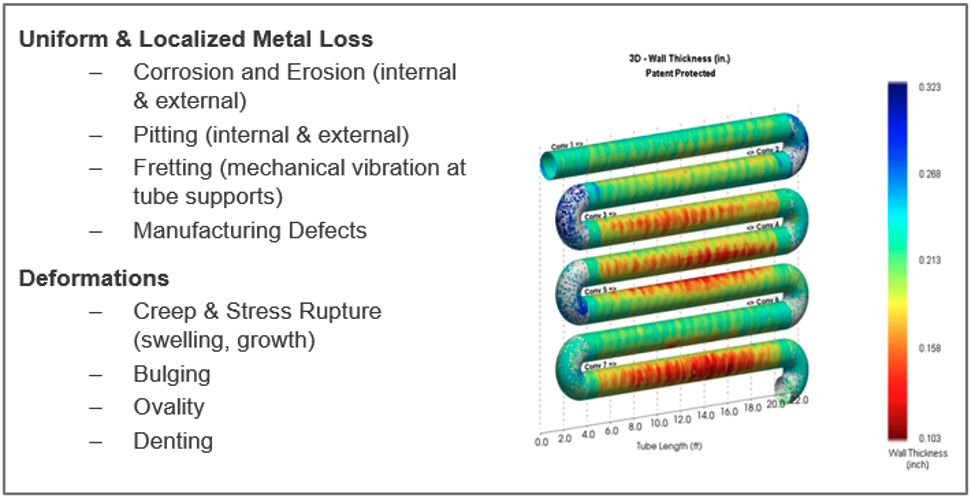Introduction
Fretting is a damage mechanism mentioned in API RP 571. It happens relatively frequently in fired heater coils where an external component in physical contact with the tubes, such as a support or hanger, vibrates during operation. This and other common damage mechanisms are shown in Figure 1. The presence of unstable fluid flow, such as fluid hammer or dual phase flow in any piping system potentially causes a flow-induced vibration (FIV). The magnitude of vibration often fluctuates with feed flow rates to the tube coils. This flow-induced vibration causes the component to rub against the external pipe surface, cutting a sharp trench, and causing localized stress concentration and external wall loss over time that might significantly reduce the tube life and increase the probability of premature failure. Without the use of proper inspection technology, detecting and quantifying these anomalies can be somewhat like finding a needle in a haystack. This is often because a hanger or other support component can hide the damage during visual inspections. The only way this damage would be visually detected or quantified is if an inspector lifted every single pin and moved every corresponding hanger to gain access to the contact area.

Visually inspecting each point of tube-support contact would result in a time-intensive project that would seem to be unending in a facility’s comprehensive maintenance plan. However, because mechanical fretting wear is not linear and can accelerate over time due to changing environmental conditions, this damage mechanism is extremely important to detect and quantify before an unexpected failure occurs.
Identifying Small Damage Mechanisms
Smart (or intelligent) pigging technology uses immersion-based ultrasonic testing (UT) to reliably and repeatedly measure a pipe’s wall thickness and radius to detect damage mechanisms seen in fired heater and boiler coils. It allows the inspection to be carried out in both the convection section and radiant sections without the need to access the furnace box. During a typical operation, the intelligent pig is transported through the interior of the serpentine piping coil via a column of water which provides propulsion and coupling for the ultrasonic transducers. Unlike typical NDT inspection methods, advanced UT-based pigging technology can provide a comprehensive assessment of both the internal and external condition of a coil.

















Comments and Discussion
There are no comments yet.
Add a Comment
Please log in or register to participate in comments and discussions.